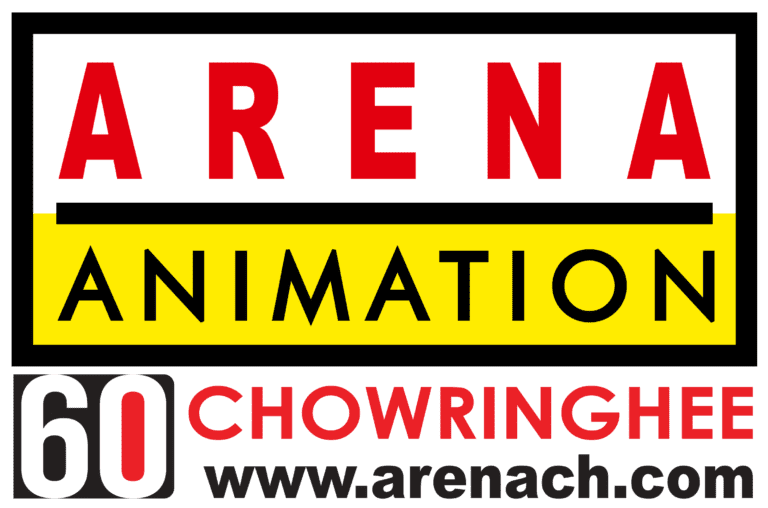Logos have been an important aspect in the evolution of man. They are designed to identify, express, and represent ideas, thoughts, and cultures. Emperors and empires were recognized through the symbols they used on their flags, currency, and more. Logos were considered to be a symbol of pride and the power that rulers held over their regions.
Today, logos and their concept have changed. They are used to identify a particular product, service, brand or company but they have not lost significance over the years.
When you join a graphic design course, logo plays a major role, as learning logo design is essential for graphic designers who want to excel in the field and contribute to building strong brand identities for clients. It is a valuable skill that enhances a designer’s versatility, creativity, and professional appeal.
If you are on the lookout for graphic designing courses in Kolkata, Arena Animation is your go-to solution! They are one among the best graphic designing institutes in Kolkata with affordable graphic design course fees in Kolkata.
History of Logo Design
The first step towards logo designing or learning any skill is learning where it all began from. Learning from the best is what will help in retaining it for a longer period.
Let us now see how logo design evolved
- Due to technological limitations, black-and-white logos were widely used in the 1800s and mostly limited to black-and-white designs. This limitation did not hinder intricate designs, though. Iconic logos of the era featured detailed depictions of animals.
- Script-heavy and coloured logos were growing popular in the 1930s, few logos used script designs, and a few brands introduced their logo with elegant, sweeping shapes in the letters. Other logos continued to feature detailed imagery with shading. Some companies incorporated colours into their logos while others were experimenting with script designs, fonts, and sizes to stand out from competitors.
- In the 1940s, coloured logos were based on colour psychology. A transformation occurred in logo design with the adaptation of colourful imagery. This also marked the introduction of colour psychology into logo design.
- In the 1950s, logo design underwent a sleek upgrade, adapting streamlined designs represented by smooth curves replacing pointed or angular outlines.
- During the 1960s, coloured television played a major role in logo advertisements. Brands incorporated vibrant, multicoloured designs, and introduced sleek modern typography. This era marked a shift from newspaper to television advertisements, requiring designers to match the visual demands of visual ads.
- In the 1970s, bolder textures and colours were added. Logos embraced bold, bubbly typography and rainbow hues. As brands adapted to the evolving culture, they aimed to create logos that could be easily recognized, addressing the needs and preferences of their target audience with each modification.
- In the 1980s, the emergence of computers influenced logo designs, resulting in a modern, tech-friendly aesthetic. Companies began embracing rounded typography, reflecting the era’s technological advancements.
- In the 1990s, brands sought to elevate their visual identities by exploring new colour patterns and textures as computer technology advanced. This gave rise to brighter and funkier logo designs.
- In the 2000s, logo designs shifted towards simplicity as brands aimed to enhance recognition among their target audience. Brands recognized that simplicity facilitated memorability.
- In today’s digital age, design software and technology have changed the way of logo design. With the shift from traditional to digital advertising channels, logos have become even more crucial for online promotion. The transition to 3D logo design has opened up new possibilities, allowing designers to bring logos to life with realistic textures, lighting effects, and animations. This new approach to logo design not only enhances visual appeal but also adds a layer of modernity to brand identities and has the power to catch audiences’ attention and leave a lasting impression.
Essential Tips Before You Begin Logo Design
Before beginning with the logo design process, thorough research is mandatory to confirm that the logo effectively communicates the essential things- the brand’s values, personality, and positioning. Market research, competitor analysis, and target audience understanding are crucial components of the research step.
Market research involves gathering insights about industry trends, consumer preferences, and market dynamics to determine opportunities and challenges for the brand. By understanding the competition and market trends, designers can design logos that stand out and resonate with target customers.
Competitor analysis involves studying the logos of competing brands to identify common themes, design trends, and points of differentiation. This analysis helps designers identify gaps in the market and develop unique logo concepts that set the brand apart from the competitors.
Importance of Logos
- Logos are now more important than ever in shaping how people perceive brands, engaging consumers, and promoting brand loyalty.
- In the digital era, logos are foundational to a brand’s visual identity, appearing on websites, social media, mobile apps, and digital ads.
- A well-designed logo can leave a lasting impression, evoking positive emotions and associations with consumers.
- Logos play an important role in online promotion and digital branding strategies, appearing on websites, social media posts, and email newsletters.
In conclusion, the way logo design has changed over time reflects the shifting demands and advancements in technology. Logos have always been an essential component of branding and communication, from the basic black-and-white designs of the 1800s to the colourful and modern designs of today. As more and more people join graphic design courses to hone their skills, learning logo design becomes essential for building strong brand identities. The versatility, creativity, and professional appeal gained from mastering logo design make it a valuable skill in the forever-evolving field of graphic design.
So, if you are passionate towards a career in design, opting for a good graphic designing college in Kolkata with the best training faculties and facilities along with affordable graphic design course fee in Kolkata is the first step. Once this has been fulfilled, the journey towards becoming a designer becomes much smoother.


